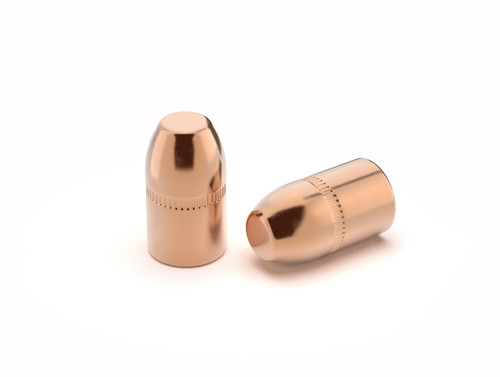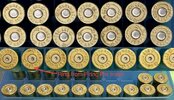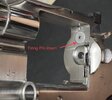JHTexas
Member
- Joined
- Dec 2, 2018
- Messages
- 131
I’m wondering if anybody has experience using Load Data from Alliant/Speer with Power Pistol for 357 magnum, mainly using their data with other company’s jacketed projectiles.
I recently loaded some 357 Magnum rounds with the load data from those two sources, and when I Chronographed (LabRadar) the rounds, they were much faster than what the load data suggested.
When I contacted Alliant tech-support and ask them for suggestions, they basically told me that the load data is only for the Speer projectiles and cannot be used with other jacketed or plated projectiles. So in other words they were no help…
Help with 357 magnum jacketed loads would be very helpful but if you have comparisons with jacketed projectiles to their load data it would help too. Do the Speer projectiles differ that much to jacketed?
I have tested this revolver with CFE-Pistol and found it to be within what Hodgdon showed for velocities. I only bring this up to eliminate the question of a fast barrel.
I’ll list the projectiles I use and also the data from my results compared to what they suggest for Speer projectiles.
Their data comes from a 10” test barrel and my revolver is a 6”.
Cases were all trimmed, chamfered, and deburred.
Redding dies were used and I put a medium to heavy crimp on.
Thanks!
Jacketed projectiles I use:
Hornady XTP 158gr
Precision Delta FMJ-FP 130gr
Precision Delta FMJ-FP 158gr (Tested)
Zero JSP 125gr
Revolver, Colt Python 6”
Each charge was individually weighed.
Load#1
Starline Brass 1.276" OAL
COAL 1.580"
CCI 500 SPP
Delta Precision 158gr fmj-fp
Power Pistol 7.0gr
Velocity 1196
ES-19
12x
Load#2
Starline Brass 1.276" OAL
COAL 1.580"
CCI 500 SPP
Delta Precision 158gr fmj-fp
Power Pistol 7.7gr
Velocity 1265
ES-57
12x
Alliant/Speer Load Data
10” Barrel
CCI 500 SPP
Their projectiles 158gr
Power Pistol 7.5gr~8.5gr
Velocity 963~1078
I recently loaded some 357 Magnum rounds with the load data from those two sources, and when I Chronographed (LabRadar) the rounds, they were much faster than what the load data suggested.
When I contacted Alliant tech-support and ask them for suggestions, they basically told me that the load data is only for the Speer projectiles and cannot be used with other jacketed or plated projectiles. So in other words they were no help…
Help with 357 magnum jacketed loads would be very helpful but if you have comparisons with jacketed projectiles to their load data it would help too. Do the Speer projectiles differ that much to jacketed?
I have tested this revolver with CFE-Pistol and found it to be within what Hodgdon showed for velocities. I only bring this up to eliminate the question of a fast barrel.
I’ll list the projectiles I use and also the data from my results compared to what they suggest for Speer projectiles.
Their data comes from a 10” test barrel and my revolver is a 6”.
Cases were all trimmed, chamfered, and deburred.
Redding dies were used and I put a medium to heavy crimp on.
Thanks!
Jacketed projectiles I use:
Hornady XTP 158gr
Precision Delta FMJ-FP 130gr
Precision Delta FMJ-FP 158gr (Tested)
Zero JSP 125gr
Revolver, Colt Python 6”
Each charge was individually weighed.
Load#1
Starline Brass 1.276" OAL
COAL 1.580"
CCI 500 SPP
Delta Precision 158gr fmj-fp
Power Pistol 7.0gr
Velocity 1196
ES-19
12x
Load#2
Starline Brass 1.276" OAL
COAL 1.580"
CCI 500 SPP
Delta Precision 158gr fmj-fp
Power Pistol 7.7gr
Velocity 1265
ES-57
12x
Alliant/Speer Load Data
10” Barrel
CCI 500 SPP
Their projectiles 158gr
Power Pistol 7.5gr~8.5gr
Velocity 963~1078
Last edited:







